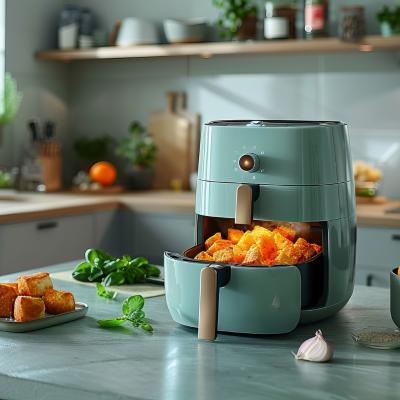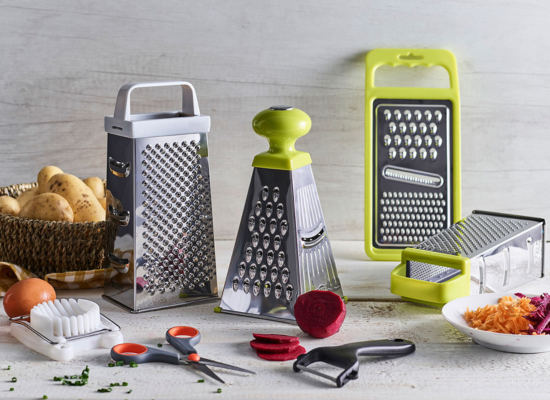
Do you often find yourself short on time and looking for a quick and easy way to prepare your meals? If so, then microwave cooking may be the perfect solution for you! In this guide, we will provide everything you need to know about microwave cooking.
We’ll cover everything from how to use a microwave to the best ways to cook different types of food. So, whether you’re a beginner or an experienced microwave user, this guide has everything for you!
To Learn More About Microwave Ovens, Consider the Following Information:
In 1945, the first microwave oven was invented.
In 1967, the microwave oven was first made available to the general public.
The average American home has at least one microwave oven.
A carcinogen, acrylamide, is 90% less likely to be released by microwaving than by traditional methods like frying and baking. So, if you’re concerned about your health, the microwave should be your go-to cooking method of preference.
According to the World Health Organization, with a power range of 500 to 1,100 watts, microwave ovens emit radio waves at a specific frequency of 2,450 megahertz.
What Is a Microwave or Microwave Oven?
A microwave is a small, countertop appliance that uses electromagnetic radiation to cook food. The radiation causes the water molecules in the food to vibrate, which creates heat and cooks the food.
The time it takes to cook food in a microwave depends on the power level of the microwave and the weight of the food.
Who Invented the Microwave Oven?
The first microwave was invented in 1945 by Percy Spencer, an engineer with the Raytheon Company. He noticed that a chocolate bar in his pocket had melted. It all started from there.
He started to experiment with the microwaves, and one day, he came up with the first microwave oven.
And then the microwave oven was first made available for home use in 1955 by Tappan, an appliance maker.
If you want to know more about the invention of the microwave oven, then check out this link.
How Do Microwaves Work?
Microwaves are a type of electromagnetic radiation. They are produced when electrons are accelerated back and forth at high speeds. When these waves hit food, they cause the water molecules in the food to vibrate. The friction from this vibration produces heat, which cooks the food.
Types of Microwave Oven
Well, we can divide the types of microwaves based on three things: function, location, and power.
The Types of Microwaves or Microwave Ovens by Function Are:
Single microwave oven or solo function: A single microwave oven, also known as a solo function microwave, is the most basic type of microwave, capable of performing basic functions such as reheating and defrosting.
It’s suitable for small families or couples. The solo function lets you cook food by itself. All you have to do is put your food in the oven and choose the right time and power level.
Convection microwave oven: These have an inbuilt fan that circulates hot air around the food, so food cooks evenly on all sides. The fan also makes this type of microwave good for baking cakes and pastries.
To use the convection function, place the food in a microwave-safe container and set the oven to convection mode. The cooking time will vary depending on the dish you’re making, so be sure to check the recipe or manufacturer’s instructions.
Grill microwave oven: As the name suggests, these types of microwaves come with a grill element. So, you can brown and crisp food like you would in a traditional grill or broiler.
To use it, place the food on the grill tray and set the oven to grill mode. The cooking time will also vary based on what you’re cooking, so be sure to check the recipe or manufacturer’s instructions.
Combi microwave oven: The combination or ‘combi’ microwave has all three functions solo, grill, and convection – in one appliance.
The Types of Microwave Ovens by Location Are:
Built-in microwave oven: This type is installed in your kitchen cabinetry and has a sleek, built-in look.
Freestanding microwave oven: The most popular type of microwave, it’s a standalone appliance that can be placed on any countertop.
Countertop microwave oven: A compact, lightweight option that sits on your countertop like a toaster or coffee maker.
Portable microwave oven: This is a small, lightweight microwave that you can take with you when you’re travelling or camping.
Drawer microwave oven: Usually found in high-end kitchens, these slide out from underneath a work surface when you need them.
The Types of Microwave Ovens by Power Are:
Low-power microwave oven: These usually have a power output of between 500 and 1000 watts. They’re good for reheating small amounts of food or defrosting delicate items like bread or pastries.
Mid-power microwave oven: With a power output of between 1000 and 2000 watts, these microwaves are suitable for most tasks, from cooking simple meals to heating up large quantities of food.
High-power microwave oven: With a power output of more than 2000 watts, these microwaves are perfect for quickly cooking large quantities of food.
Which Microwave Is Best for You?
When it comes to microwave ovens, there are many different brands and models to choose from. So, which one is best for you? The answer depends on your needs and budget.
If you’re looking for a basic model with no bells and whistles, then a mid-priced microwave might be the best option. But if you want a more high-tech oven with lots of features, then you might need to spend a little bit more money.
The bottom line is that there is a microwave oven out there for everyone. So, take the time to research your options and find the one that’s right for you.
Guide to Buying Your First Microwave Oven
If you’re in the market for a new microwave oven, there are a few things you should keep in mind.
First, you need to decide what size oven is ideal for your kitchen space. If you have a small kitchen, then a compact oven might be the best option. But if you have more space to work with, then a full-size oven would be better.
Second, think about what features you want in an oven. Do you need one that has a built-in timer? Or do you want an oven with sensor cooking? There are many different types of microwave ovens on the market, so it’s important to find one that has the features you need.
Finally, consider your budget. The price of a microwave oven can vary from $30 to $500. Choosing one that is within your financial ability is indeed important.
With these tips in mind, you’ll be sure to find the perfect microwave oven for your needs.
The Ultimate Guide to Microwave Cooking- Know From a to Z About Microwave Cooking
What Is Microwave Cooking?
Microwave cooking is the process of heating food using microwaves. The microwaves cause the water molecules in the food to vibrate, which creates heat and cooks the food.
Learn About the Advantages of Microwave Cooking
Microwave cooking has several benefits over traditional methods of cooking. First, it is much faster than other methods.
Second, it is more energy-efficient because less heat is lost during the cooking process.
Third, it can help to preserve nutrients in food that might be lost during other methods of cooking. Finally, microwave cooking is more convenient because it doesn’t require the use of an oven or stove.
Learn About the Disadvantages of Microwave Cooking
While microwave cooking has many benefits, there are also some disadvantages to consider.
First, microwaves can cause food to lose some of its nutritional value. Second, microwaves can create hotspots in food, which can lead to uneven cooking.
Finally, microwaves can sometimes produce harmful toxins if they are not used properly.
What Are the Types of Microwave Cooking?
Well, there are three types of microwave cooking: direct, indirect, and combination.
1. Direct microwave cooking: Direct microwave cooking is when the food is placed directly in the microwaves to cook. This is the most common type of microwave cooking.
- Benefits of direct microwave cooking: The benefits of direct microwave cooking are that it is fast, efficient, and convenient.
- Disadvantages of direct microwave cooking: The disadvantages of direct microwave cooking are that it can cause food to lose nutrients, it can create hotspots, and it can produce harmful toxins.
2. Indirect microwave cooking: Indirect microwave cooking is when the food is placed on a plate or in a dish that is not directly exposed to the microwaves. The heat from the plate or dish will cook the food.
- Benefits of indirect microwave cooking: The benefits of indirect microwave cooking are that it cooks more evenly than direct microwave cooking, and it prevents the formation of harmful toxins.
- Disadvantages of indirect microwave cooking: The disadvantage of indirect microwave cooking is that it takes longer than direct microwaving.
3. Combination microwave cooking: Combination microwave cooking is a combination of direct and indirect microwave cooking. The food is first cooked indirectly, then it is exposed to direct microwaves to finish cooking.
- Benefits of combination microwave cooking: The benefits of combination microwave cooking are that it is more efficient than direct microwaving, and it prevents the formation of harmful toxins.
- Disadvantages of combination microwave cooking: The disadvantage of combination microwave cooking is that it can take longer than direct microwave cooking.
How to Use Microwave for Cooking?
There are two ways you can cook food in a microwave oven. The first is by using the microwave’s power levels, and the second is by time.
- To use the power levels, set the oven to high or low and then select the power level. The higher the number, the more heat will be applied to the food.
- To use time cooking, enter the weight of your food into the oven’s timer and it will automatically calculate how long it needs to cook for.
Which Foods Can You Cook in a Microwave Oven?
There are endless possibilities when it comes to microwave cooking. You can cook everything from simple dishes like grilled cheese sandwiches and quesadillas to more complex meals like pasta and casseroles.
Here Are Some Ideas to Get You Started:
- Grilled cheese sandwich: Place two slices of bread on a plate and top with cheese. Microwave on high for 30 seconds to one minute, or until the cheese is melted.
- Quesadilla: Place a tortilla on a plate and top with shredded cheese and chopped vegetables. Microwave on high for 30 seconds to one minute, or until the tortilla is crispy and the cheese is melted.
- Pasta: Cook pasta in boiling water according to package instructions. Drain and add to a microwavable bowl. Add sauce and microwave on high for two to four minutes, or until the pasta is cooked through.
- Casserole: Layer cooked chicken, vegetables, and cheese in a microwavable dish. If desired, top with another layer of tortillas. Microwave for 5 to 8 minutes on high, or until the casserole is hot and the cheese is melted.
- Furthermore, you can also make chicken nuggets, mac and cheese, quiche, and chocolate cake in the microwave.
Well, as you can see, there are endless possibilities when it comes to microwave cooking. So, get creative and experiment with different recipes. You might be surprised at what you can make in your microwave oven.
Some General Tips for Microwaving Food:
Don’t overcrowd your microwave – give each item of food enough space to cook evenly.
Never use metal containers or foil in a microwave as they will cause sparks.
Use a toothpick to test whether cakes and other baked goods are cooked through; if the toothpick comes out clean, they’re ready.
Foods That Are Not Safe to Cook in the Microwave Oven and Why
There are some foods that are not safe to cook in the microwave oven. These include:
- Eggs: The microwaves can cause the egg to explode and create a mess.
- Potatoes: The microwaves can cause the potato to catch on fire.
- Chicken: The microwaves can cause the chicken to dry out and become tough.
- Fish: The microwaves can cause the fish to dry out and become rubbery.
Materials That You Cannot Put Inside the Microwave and Why
There are some materials that you should never put inside a microwave oven because they can cause dangerous fire hazards. These include:
- Plastic containers: The chemicals in plastic can release toxic fumes when heated. And sometimes the plastic can also get melted inside the microwaves.
- Styrofoam cups and plates: The polystyrene in Styrofoam can melt and release harmful toxins into your food.
- Foil packets: Heating foil packets can create sparks that may start a fire.
- Wax paper: The heat from the microwaves can cause wax paper to ignite.
When using your microwave oven, always be aware of these dangers and take care not to use any of these materials. With a little bit of caution, you can safely enjoy all the benefits of microwave cooking.
Metal: According to SciTech, it is not safe to put metal utensils inside the microwave oven.
Source: livescience.com
Now, you might be thinking that can I put glassware inside the microwave oven? Well, you can check out this article: Can You Put Glass In The Microwave?
Microwave Safety Tips to Maintain While Cooking
There are a few safety precautions you should take while cooking with a microwave oven. These include:
- Always keep an eye on the food while it’s cooking. The microwaves can cause intense heat and flames can quickly develop.
- Do not leave the oven unattended when it’s turned on. If something does happen, you want to be there to deal with it immediately.
- Keep children and pets away from the oven while it’s in use. The high temperatures can cause burns or other injuries.
- Do not try to open the door of the oven while it’s heating. This can cause dangerous steam explosions.
Well, if you follow these simple safety rules, you can be sure that your microwave cooking experience will be safe and fun.
How to Clean the Microwave After Cooking?
Once you’re finished cooking, it’s important to clean your microwave properly. The easiest way to do this is by using a vinegar and water solution.
- Simply mix one cup of vinegar with two cups of water and pour it into a microwavable bowl. Put the bowl in the oven and microwave it on high for five minutes. The steam from the mixture will help loosen any food particles or stains. After five minutes, remove the bowl and wipe down the inside of the microwave with a sponge or paper towel. You may need to use a little bit of elbow grease to get rid of any stubborn stains.
- You can also use baking soda to clean your microwave. Mix one cup of baking soda with one quart of water in a microwavable bowl. Microwave on high for five minutes. The baking soda will help break down any food residue or grease buildup. Then, wipe down the interior of the oven with a damp cloth.
Cleaning your microwave regularly will help keep it in good condition and prevent any food contamination. With these simple tips, you can easily keep your microwave clean and safe to use.
LEARN MORE: Can You Put Glass In The Microwave?
Final Thoughts on Microwave Cooking
Microwave cooking is a convenient and safe way to prepare food. But there are some foods and materials that you cannot put inside the microwave oven. And you already know about those things and the reasons behind these rules.
Well, this ultimate guide to microwave cooking will not only help you with microwave cooking and staying safe, but it will also help you buy the right microwave for you!
We hope you enjoy your microwave cooking!



